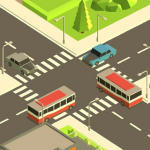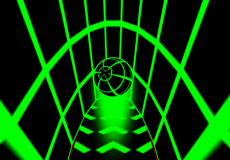

2048
Advertisement
2048 is a grid-based logic game where the player moves numbered tiles by swiping in any of four directions. Every swipe shifts all tiles as far as possible in that direction. When two tiles with identical numbers touch, they combine into a single tile with a doubled value. After each move, a new tile—typically a 2 or a 4—appears in a random empty cell. The goal is to reach a tile with the number 2048, though the game can continue beyond that point if there is still space on the grid.
Advertisement
Similiar games
2048 is a grid-based logic game where the player moves numbered tiles by swiping in any of four directions. Every swipe shifts all tiles as far as possible in that direction. When two tiles with identical numbers touch, they combine into a single tile with a doubled value. After each move, a new tile—typically a 2 or a 4—appears in a random empty cell. The goal is to reach a tile with the number 2048, though the game can continue beyond that point if there is still space on the grid.
Movement and Tile Strategy
The game requires managing limited space and making decisions that prevent the grid from filling up too quickly. Players often aim to group large tiles in one area, reducing the chance of scattering them across the board. The random placement of new tiles adds unpredictability, forcing continuous adjustments. Maintaining control involves minimizing unnecessary swipes and keeping a flexible structure that allows for multiple merging options. If the board reaches a state where no merges or moves are possible, the session ends.
Visual Layout and Play Rhythm
2048 uses a simple grid with numbered tiles that change color as their value increases. This helps the player quickly read the board and track development. Since there are no timers, players can analyze the board before each move. The interface is designed to support repetition, allowing quick restarts and experimentation with new strategies. Despite its simple appearance, the game encourages repeated play due to the constant variation in how each session unfolds. Its balance of predictability and randomness creates a problem-solving experience focused on order and structure.
Discuss 2048



















